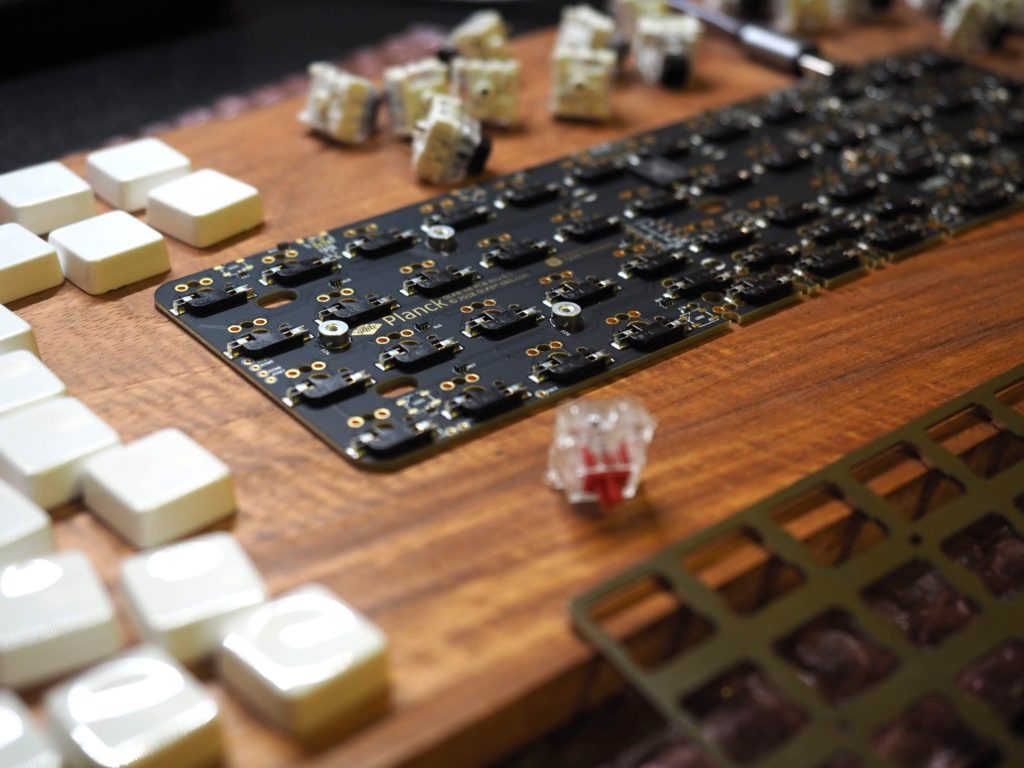Today, almost everyone is familiar with computer keyboards because of its usage in our daily lives. We use it at the workplace, to store and organize data, to connect to the internet, and much more. However, when we look at the keys of our keyboard, a common question that arises in our mind is why are keyboards Qwerty and not alphabetical.
So, in this article, we will try to find out the answer but first, we must know what exactly is a Qwerty arrangement.
What is Qwerty Arrangement?
Qwerty arrangement is the standard keyboard layout in most English-speaking countries. It is named after the first 6 letters (Q, W, E, R, T, Y) of the keyboard, which are placed on the top row of the keyboard. This layout was designed in 1837 by Christopher Sholes for the printing press and became standard within a few years.
The Qwerty arrangement has the most commonly used keys located at the home row, which is the row closest to the person’s hand. The layout of the keyboard is based on the French alphabet, with the vowels being at the left and the consonants at the right side of the keyboard.
Why are Keyboards Qwerty?
The answer to this question dates back to the time of manual typewriters. At that time, when the keyboard was invented, the arrangement of the keys was of alphabetical order.
This created ‘Typewriter Jam’ problems because people would type the same letter over and over again. To fix this, in 1837, the man by name of Christopher Latham Sholes who developed the first typewriter, used a keyboard with characters arranged in what is now known as QWERTY form.
The reason for this design was to slow down the speed of the typists. In order to type quickly on a typewriter, you had to move your fingers one at a time across the keys – which was much slower than using an alphabetical keyboard.
To create the perfect design of this layout, Christopher Latham Sholes had to struggle for 5 years. During this time, he made a lot of arrangements of the keyboard through trial and error.
James Densmore was the business associate of Charles Sholes, who sold him the manufacturing rights to the Type-Writer in 1873. After buying these rights, Remington made lots of adjustments to create the essential layout for modern keyboards – a QWERTY arrangement with letters on each key.
There is also another type of arrangement that we must discuss, called the Dvorak keyboard.
QWERTY Vs Dvorak keyboard:
The layout of the QWERTY keyboard is different from the layout of the Dvorak keyboard, which was designed in the late 1800s. Dvorak keyboards were designed to minimize the distance traveled by the fingers on the keyboard.
This was done in order to make it easier for typists to use alternative hands-on consecutive letters. So, Dvorak keyboard layouts are typically designed with the left-hand side organized around the letters of the alphabet, with all of the vowels located near their corresponding letter on that side of the keyboard. The remaining consonants are placed on the right side.
The main difference between the QWERTY and Dvorak layouts is that the QWERTY layout is based on the order of letters on a typewriter keyboard, while the Dvorak layout uses numbers instead. And, with one hand, you can’t type enough words if you are using the Dvorak keyboard, meaning you will constantly have to alternate hands while typing.
The bottom line is that the QWERTY layout is the most successful one and we shall discuss several benefits of it ahead.
Related: Keyboard Layouts for Professionals
Benefits of QWERTY keyboards:
There are several reasons why keyboards are more beneficial when arranged in a Qwerty format.
The most obvious reason is that this layout is easiest for people to use with one hand. This was especially important when computers first began becoming widespread, as many people were not used to using them. By having the commonly used keys located at the home row, it became much easier for people to type quickly and accurately.
Another reason is that this layout is standard in most English-speaking countries. Many keyboard layouts other than Qwerty are only found in specific countries or regions, such as the UK’s QWERTY layout. This is because different countries have different idioms and keyboard shortcuts that are easier to type using a specific layout. Having a standard layout makes it easier for users to transition between different languages and keyboards.
Lastly, Qwerty is the most common layout on the internet. As computers became more widespread, companies began creating websites in various languages. If these websites were designed using a different keyboard layout, it would be difficult for users to type without making mistakes. However, by using a standard layout such as Qwerty, it becomes much easier for people to learn and use new keyboard shortcuts.
Drawbacks of QWERTY Keyboards
There are of course drawbacks to the Qwerty layout as well.
For example, it can be difficult to type words that have certain accented letters at the beginning or end of them.
Additionally, people who are left-handed may find it more difficult to use a keyboard in a Qwerty layout because most keyboards are designed with right-handed people in mind. Also, because the keys are arranged in a grid, it can be difficult to find specific keys when you’re typing fast.
Overall, though, the QWERTY keyboard is by far the most commonly used layout and has proven to be both efficient and comfortable for many users.
Conclusion
So, the history behind why keyboards are qwerty and not alphabetical is quite interesting. It is important to have this information to make sense of this format. We can now safely conclude that the Qwerty arrangement is the best way to type on a keyboard. It is easy to use and it is comfortable for everyone.


